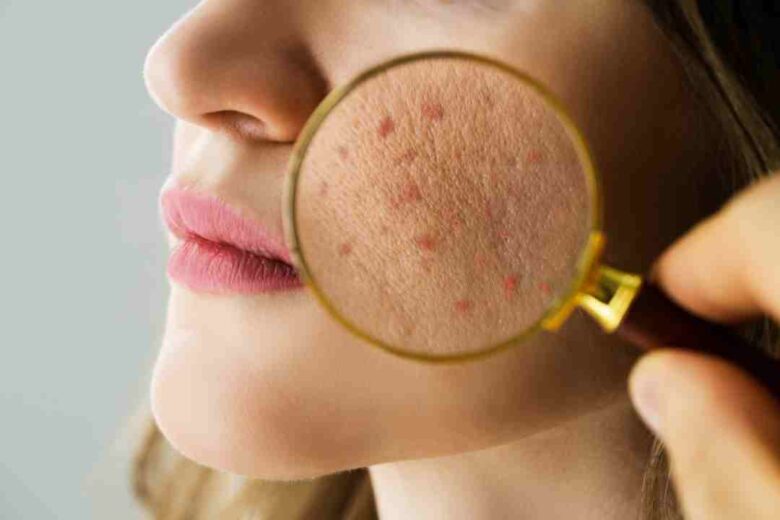Acne is a common skin condition that typically occurs when hair follicles become clogged with oil, dead skin cells, and bacteria. It often appears as pimples, blackheads, whiteheads, and sometimes deeper cysts or nodules. The severity of acne can vary widely, ranging from mild to severe. Here are the typical symptoms and signs of acne:
- Pimples (Pustules): Pimples are raised, red bumps on the skin with a white or yellow center filled with pus. They are often referred to as pustules.
- Blackheads (Open Comedones): Blackheads are small, dark spots that appear on the skin’s surface. They are open comedones formed when a hair follicle becomes clogged with oil and dead skin cells. The dark color is not due to dirt but rather oxidation of the oil.
- Whiteheads (Closed Comedones): Whiteheads are similar to blackheads but remain closed under the skin’s surface. They appear as small, flesh-colored or white bumps.
- Cysts and Nodules: In more severe cases of acne, larger and more painful lesions can develop. These include cysts and nodules. Cysts are pus-filled, painful lumps beneath the skin, while nodules are hard, large, and deeply embedded bumps.
- Inflammation: Acne lesions are often accompanied by redness and inflammation around the affected area due to the body’s immune response to the bacteria present in the clogged follicles.
- Scarring: Severe or untreated acne can lead to scarring. This can manifest as depressed or raised scars on the skin after the acne lesions have healed.
- Oiliness and Shiny Skin: People with acne-prone skin might notice an increase in oil production, leading to shiny or greasy-looking skin.
- Tenderness or Pain: Larger and deeper acne lesions, such as cysts and nodules, can be painful and tender to the touch.
- Texture Irregularities: Acne can lead to changes in skin texture, including roughness or unevenness.
- Location: Acne commonly appears on the face, neck, chest, shoulders, and back—areas where oil glands are more active.
It’s important to note that various factors can contribute to the development of acne, including hormonal changes, genetics, diet, stress, and certain skincare or makeup products. Read more about A review of the diagnosis and treatment of acne in adult female patients by clicking here.
Mild cases of acne can often be managed with over-the-counter treatments, while more severe cases may require prescription medications or interventions from a dermatologist. If you’re concerned about acne or its impact on your skin, it’s a good idea to consult a healthcare professional or dermatologist for proper diagnosis and treatment recommendations.




